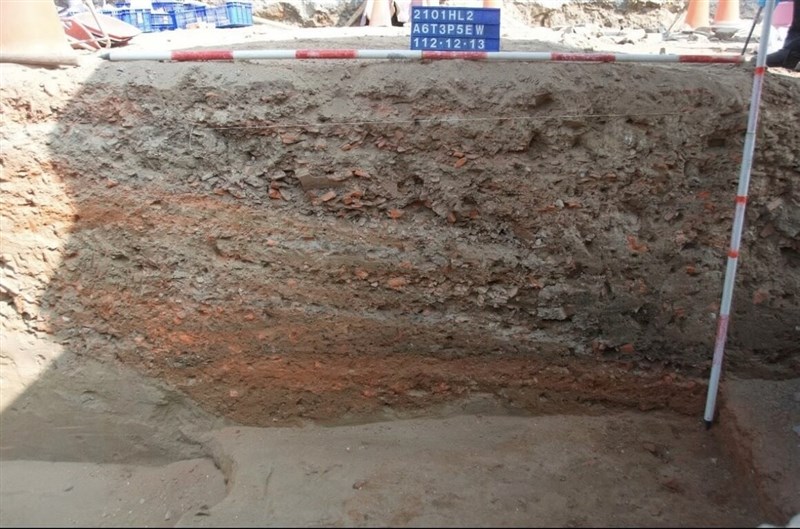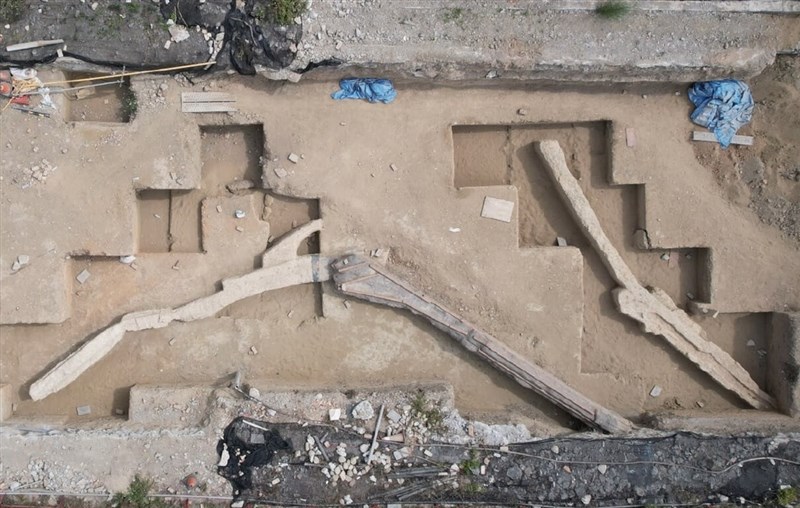
Tainan, Oct. 31 (CNA) A Tainan railway project recently unearthed roads in the city made in part with sugar dating back to the 19th century, according to the Tainan Municipal Administration of Cultural Heritage on Thursday.
The remains of the roads, built into the ground and made of a plethora of materials, including sugar, were discovered around the area under Tainan's Sin-Lau Hospital, on Dongmen Road in Tainan's East District, the administration said in a post on its website.
Archaeologists determined that the ruins were parts of important roads in Tainan built during the first half of the 19th century when Taiwan was loosely controlled by the Qing Dynasty as a prefecture of Fujian province.
While the main materials used for the roads were mixed-mud mortar, its crevices were filled with a mixture made from mortar and broken ceramic and tile as well as pieces of sugar, the administration said.
Additionally, referencing a map of Tainan from 1875, archaeologists said the location of the ruin closely resembled that of the "Bullock Cart Road" (牛車路) that once served the area of the discovery.
They concluded that either the construction or renovation of the roads in question took place in around 1836, the 16th year of the reign of Emperor Daoguang.
Archaeologists hypothesized that the workers constructing the roads used materials they could easily access, which was why sugar and broken pieces of ceramics and tiles were used, according to the administration.
Historically, the discovered area was once the heart of the sugar-making industry in old Tainan, which was known at the time as a major sugar center.

According to the "Account on Visiting Taiwan" (臺灣采訪冊), a historical work by officials from the Qing Dynasty who visited and evaluated Taiwan, the sugar-making industry was so robust that pieces of sugar could be found scattered all around the location.
The account also documented that during one summer, steam rose from the roads of the area, which then reacted with the sugar mixed into the roads and other scattered sugar to fill the air with a sweet aroma.
The administration said the archaeological team working on the site has completed documenting the location and temporarily relocated the artifacts and ruins to allow for the project to move the railway line underground to continue.
Once the railway project is completed, the ruins and artifacts will become a part of a subsequent parkway cultural project to return the history and heritage of Qing Dynasty Tainan to its people, the administration cited Tainan Mayor Huang Wei-che (黃偉哲) as saying.
- Society
Tests show mains water safe following Keelung River oil spill: TWC
11/30/2025 09:48 PM - Society
New rules for Taiwanese drone sellers, importers to take effect Monday
11/30/2025 09:10 PM - Politics
'Autumn Struggle' marchers slam Lai's NT$1.25 trillion defense plan
11/30/2025 08:52 PM - Politics
Taiwan marks 29 years since feminist pioneer Peng Wan-ru's unsolved murder
11/30/2025 08:36 PM - Society
Vaccine still effective against new prevalent flu variant: Taiwan CDC
11/30/2025 06:01 PM